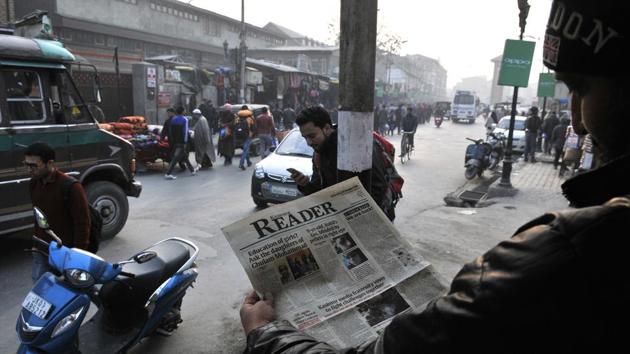At a time when opinion and ideology are sharply polarised, when a rant is what passes for news debates and large sections of mainstream media are under attack for a litany of sins including loss of credibility and openly aligning with one or another political party, when social media is patrolled by paid trolls and post-truths, a website that reaffirms what is good and decent in society might seem like an anachronism, but is in fact a successful growth story

Heard about the former railway clerk from Nellore station who put the kids he found begging on the platform into school? Well, one of them ended up becoming a scientist and another is now a professor.
What about the vet in Kaziranga who rescues orphaned and injured wild animals — including, once, a pair of baby clouded leopards — nurses them, and then sets them free in the wild?
The man who invented a bicycle that runs on water and land? The one who makes preservative-free edible cutlery from millet?
Read | Displace negativity to check violence against women: President Mukherjee
If you’ve been reading The Better India (www.thebetterindia.com), you would know these guys — Sarath Babu, Bhaskar Choudhury, Mohammad Saidullah, and Narayana Peesapaty. They are what the blog-turned-website calls India’s “unsung heroes”.
“Every morning we would read the newspapers that were filled with gloomy stories,” says Dhimant Parekh, a computer science engineer, and B-School graduate who founded the website along with his wife Anuradha Kedia, also a B-School graduate and civil engineer. “And yet, we found that right in our neighborhood there were amazing stories that never got reported.”
Seven years ago, Parekh and Kedia took it upon themselves to become the chroniclers of a better India where ordinary people do extraordinary good. The idea was to focus on positive stories and, in the process, inspire change, says Kedia.
Read | If you don’t like music, something is wrong with your brain. Science proves it
By 2014, Parekh and Kedia had chucked up their jobs to work full-time on the website. Today, The Better India has, after a round of angel investing, 15 employees, a network of 600 people who pitch stories and ideas, and 40 million unique readers a month, says Parekh.
The positive news isn’t a new concept. One of the oldest good-news-only websites is Positive News, which also publishes a 25,000-circulation quarterly print magazine from England. Other sites include The Good News Network (lead story: Mall opens doors for stray dogs during a winter storm). Is this journalism? Not really because what you get is only a part of the picture — the pretty part.
And yet, it’s an important part. Why do these websites work? Partly it’s the reprieve from the general pessimism of mainstream media news where it’s the warped, the scandalous, and the unsavory that propels the ratings and the business.
Read | Beware of bad bosses: A ‘Toxic’ workplace may ruin your health
At a time when opinion and ideology are sharply polarised, when a rant is what passes for news debates and large sections of mainstream media are under attack for a litany of sins including loss of credibility and openly aligning with one or another political party, when social media is patrolled by paid trolls and post-truths, a website that reaffirms what is good and decent in society might seem like an anachronism, but is, in fact, a successful growth story.
The Better India tells us that heroism is not dead. The people it profiles may not make headlines, will never be sought for selfies, and in all likelihood will never win even a local Rotary Club award; yet they are, nevertheless heroic in their single-minded belief that they can in some tiny way make the world better.
A website packed with good news has the effect of empowering its readers. A young visually impaired girl learns from the website about a photography club that is run by other visually impaired people and it opens up a world of opportunity for her. If they can do it, so can she. Someone else reads about a childcare center run by a 96-year-old freedom fighter in West Bengal and what follows is Rs 5 lakh in donation. Still, other stories create jobs for the differently abled, solar lamps for a village without electricity, and countless offers to volunteer come tumbling in. “People want to be a part of the change,” says Kedia. The website enables a belief that each one of us is capable of doing good.
Read | Stint at Raebareli Hospital helped Nobel scientist develop cancer research links with India
In a post-Brexit and post-Trump world where growth slows, xenophobia rises and borders close, a website surges ahead in the belief that it can tell great stories and inspire change. Sometimes just knowing there’s a silver lining can dispel the clouds.
Namita Bhandare is gender editor, Mint
The views expressed are personal
@namitabhandare